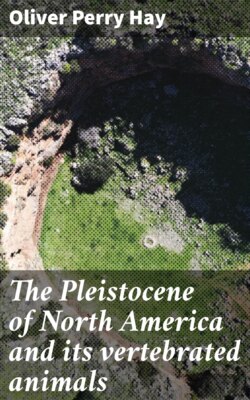Читать книгу The Pleistocene of North America and its vertebrated animals - Oliver Perry Hay - Страница 13
На сайте Литреса книга снята с продажи.
VIII. On Evolution During the Pleistocene.
ОглавлениеTable of Contents
We have seen that the Pleistocene fauna was very different from that which existed when white men first entered the country; also that the difference has in large part been due to the destruction of species, genera, and families. We may now inquire whether or not the loss has been to any considerable extent compensated by the development of new forms. Many of our existing genera and species have been found in the collections that represent the earliest Pleistocene known to us. The writer believes it would be unsafe to say that any living species that one might select may not hereafter be discovered in early Pleistocene collections. It is probably true, however, that some of those small changes by which we distinguish one species from another have been produced. Some small but persistent differences might, for example, have arisen in the teeth or in the form of the skull of a group of muskrats which would justify us in regarding it as forming a new species. It is extremely doubtful that any new genus of vertebrates has been developed since the first interglacial stage. Matthew has concluded (Science, n. s., vol. XL, pp. 232–235) that the evolution of the mammals during the Pleistocene amounts to about one-tenth of that achieved during the Pliocene. The present writer regards this as a liberal estimate.
This failure to evolve new genera and species is not necessarily to be attributed to the shortness of the Pleistocene period; it may have been due rather to the unfavorable conditions. In what direction could an animal make progress when, after being subjected for some thousands of years to one set of conditions, it was compelled for some other thousands to endure just the opposite conditions? If life in front of a glacier for some centuries led to the development of a coat of hair on an elephant, that coat would probably disappear during the succeeding interglacial stage, and in the end, if the elephant had not perished, he would be where he began.
Too much stress must not, however, be placed on this suggestion. It may yet be possible to show that nowhere in the world was any considerable progress made by mammals during the Pleistocene, in the modification of their forms and structure. On the other hand, it is also possible that all over the world climatic conditions were at intervals unfavorably affected by the development of the great glaciers and that all life was retarded in its evolution. The writer believes, therefore, that it can not be shown with certainty that new forms of living things, especially vertebrates, were developed in North America during the Pleistocene. It may be quite as difficult to prove that any genera or species of importance entered from other lands after the first invasion. Under these conditions there appears to be no means for determining successive faunas other than through recording the time of the disappearance of genera and species.
